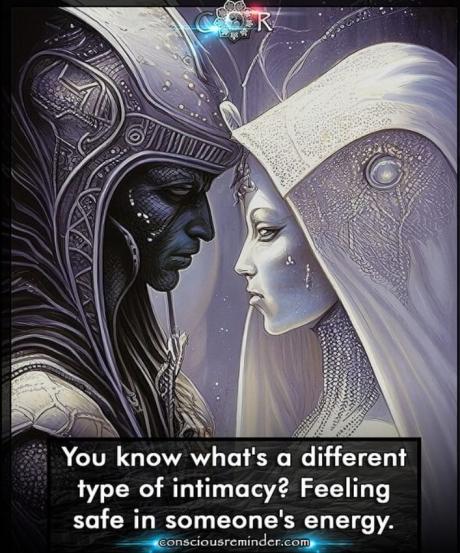Types of Groups
Social Group Work
All of us are simultaneously members of various types of groups. We are members of a family, members of friendship groups, members of work organizations and members of fan club or a even a religious group. Sociologists have attempted to classify is various types of groups as follows:
Voluntary Groups vs Involuntary Groups
- We may join a political party or a particular association (typical of an occupation). Such groups we join through our own choice and effort are voluntary groups. In contrast we are forced to join or are automatically incorporated as members of certain groups without choice;
e.g. we are automatically classified in groups as members based on sex, age, nationality, religion and ethnicity. These latter groups in which we become members by birth or without any choice are involuntary groups.
Open Groups vs Closed Groups
- Open groups are those groups characterized by changing membership. Here, virtually anyone can become a member. As certain members leave, new members are admitted, and the group continues. For instance, anyone can join the Hrithik Roshan fan club. On the other hand, there are some groups that maintain exclusiveness by restricting the membership and make it much more difficult to join. Only a few qualify to become members in such clubs. Such groups with restrictive membership criteria are closed groups; e.g. the mafia (underworld), Royal Enfield motorcycle clubs, night clubs, etc.
Closed groups typically have some time limitation, with the group meeting for a predetermined number of sessions. Generally, members are expected to remain in the group until it ends, and new members are not added.
- There are some advantages to open groups that incorporate new members as others leave, one of which is an increased opportunity for members to interact with a greater variety of people. A potential disadvantage of open groups is that rapid changing of members can result in a lack of cohesion, particularly if too many clients leave or too many new ones are introduced at once. Therefore, it will be better to bring in new members one at a time as and when opening occurs.
Vertical Groups vs Horizontal Groups
- There are certain groups, whose membership consists of individuals from all walks of life; e.g. religious groups may have members from all classes. Such a group may be regarded as a vertical group. On the other hand, a horizontal group consists predominantly of members from one social class. Occupational groups of doctors (e.g. IMA); guilds or associations of persons of a trade e.g. electricians, carpenters, non-gazatted officers for instance are composed largely of members from the same social class..
Primary Groups vs Secondary Groups
- Cooley described primary groups as collectivities of individuals – as in the case of play groups, neighbourhood or village – “characterized by intimate, sympathetic face to- face association and cooperation.” A primary group is a group in which members develop close, personal, intimate and enduring relationships; e.g. family, neighbors, work associates, etc. Here, the members know each other very well, are greatly influenced by one another and feel closely related. On the other hand, secondary groups are characterized by contractual relationships and ‘communication on indirect media’ (Faris, 1937). These are ‘relatively larger, relatively temporary, anonymous’; they are also ‘formal, impersonal groups, in which there is little social intimacy or mutual understanding ’ and ‘based on some interest or activity’, and whose ‘members interact on the basis of some specific roles.’
Natural Groups vs Formed Groups
- Natural groups consist of members coming together in a spontaneous manner, on the basis of naturally occurring events, interpersonal attraction or the mutually perceived needs of members. Family, peer groups and street gangs are examples of natural groups. (Whyte, 1993). On the other hand, formed group are those groups constituted by any influence or intervention external to the group. Such groups are usually formed for a particular purpose. Therapy groups, encounter groups, committees and teams are examples of formed groups.
Formal Groups vs Informal Groups
- Formal groups are those groups that require someone to determine a task that needs to be accomplished, which requires some kind of organizational system, made up of various job roles, for which individuals are recruited (Artherton, 2003). Here, task is what matters, and everything else —particularly the individuals and the roles they occupy— may be changed. Informal groups work the other way round. A group of individuals meet: if they form a group, then they will informally allocate roles depending on individual preferences, and / or on talents. This collection of roles makes a system possible, and so occasionally they may undertake a task together, such as organizing a trip, or a night out or a party. It is the preferences of the Individuals which are paramount; tasks are incidental.
Treatment Groups vs Task Groups
- Treatment groups signify groups whose major purpose is to meet the socio-emotional needs of the group members. Such groups often aim at meeting the members’ need for support, education, therapy, growth and socialization.
Treatment groups include growth groups (e.g. encounter groups for couples, value clarification groups for adolescents, or educative groups for community women);
therapy groups (psychotherapy groups, support groups for de-addicted or the sober) (Konopka, 1983);
socialization groups (YMCA, half-way homes) (Middleman, 1982; Whittaker, 1985). In contrast, task groups come in existence with the purpose of accomplishing a goal that is neither intrinsically nor immediately linked to the needs of the group members, but rather, of broader constituency.
- The classic example for task groups in social work practice setting are Medical Teams, Treatment conferences convened to monitor treatment as well as Staff...
Social Groups of Other Typology
- Reference Group – Individuals almost universally have a bond toward what are known as reference groups. These are groups to which the individual conceptually relates him/herself, and from which he/she adopts goals and values as a part of his/her self identity.
- Peer group – A peer group is a group of approximately the same age, social status, and interests. Generally, people are relatively equal in terms of power when they interact with peers.
- Clique – An informal, tight-knit group, usually in a High School/College setting, that shares common interests. There is an established yet shifting power structure in most Cliques.
- Club – A club is a group, which usually requires one to apply to become a member. Such clubs may be dedicated to particular activities, such as sporting clubs.
- Household – all individuals who live in the same home.
- Community – A community is a group of people with a commonality or sometimes a complex net of overlapping commonalities, often – but not always – in proximity with one another with some degree of continuity over time. They often have some organization and leaders.
- Franchise – this is an organisation which runs several instances of a business in many locations.
- Gang – A gang is usually an urban group that gathers in a particular area. It is a group of people that often hang around each other. They can be like some clubs, but much less formal.
- Mob – A mob is usually a group of people that has taken the law into their own hands. Mobs are usually a group which gather temporarily for a particular reason.
- Posse – A posse was initially an American term for a group of citizens that had banded together to enforce the law. However, it can also refer to a street group.
- Squad – This is usually a small group, of around 3-8 people, that would work as a teamto accomplish their goals.
- Team– similar to a squad, though a team may contain many more members. A team works in a similar way to a squad.
- Learning (groups) – Drs David and Roger Johnson of the University of Minnesota (the gurus of group work and co-operative learning research) identify three types of groups that can promote collaborative learning:
- Informal learning groups - Ad hoc, transient, short term groups that can be quickly formed and utilised in even a large lecture situation
. - Formal learning groups – The sort of groups that we would use to work on larger collaborative projects. This type of group work is more structured and requires much more planning. Formal learning groups generally include multiple opportunities for reflection on the group’s progress.
- Informal learning groups - Ad hoc, transient, short term groups that can be quickly formed and utilised in even a large lecture situation
- Base groups (study group) – Self-selected groups of students who work together independently of specified class time or assignments.






Comments